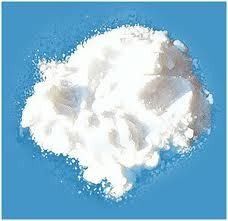CUPRIC CHLORIDE DIHYDRATE
Product Details:
- Properties Strong oxidizing agent moisture-sensitive
- Grade Industrial grade
- Purity 99% minimum
- Usage Used in agriculture as a fungicide in chemical manufacturing and in dye production
- Shape Crystals or powdered form
- EINECS No 231-210-2
- Refractive Rate Not determined
- Click to View more
X
CUPRIC CHLORIDE DIHYDRATE Price And Quantity
CUPRIC CHLORIDE DIHYDRATE Product Specifications
- Crystals or powdered form
- Used in agriculture as a fungicide in chemical manufacturing and in dye production
- Industrial grade
- 99% minimum
- Strong oxidizing agent moisture-sensitive
- Store in a cool dry and well-ventilated area away from incompatible substances
- Light green crystalline solid
- [CuCl2(H2O)2]
- Not determined
- 231-210-2
- 4.0 - 4.3 (5% solution)
- 170.48 g/mol
- 2 years if stored properly
- Crystalline solid
- Odorless
- 10125-13-0
- YES
- Electroplating catalyst pigments and as an intermediate in organic synthesis
- Copper Chloride Water
- 2.54 Gram per cubic centimeter(g/cm3)
- 28273990
- 100 C (decomposes)
- CuCl22H2O
- Metallic and bitter
- Highly soluble in water ethanol and methanol
Product Description
CUPRIC CHLORIDE DIHYDRATE
Technical specification
Formula | CuCl2.2H2O |
Description | Fine Green Crystals |
Mol. Wt. | 170.5 |
Copper | 37.0 % (Min) |
Iron | 0.1 % (Max) |
Sulphate | 0.06 % (Max) |
Arsenic | 0.003 % (Max) |
Free Moisture | 2.0 % (Max) |
Water Insolubles | 0.1 % (Max) |
Assay | 98.0 % (Min) |
Packing | 25/50 Kgs. Bags / Drum as per Requirement. |
APPLICATION
As Catalyst for Organic & Inorganic Reactions, in Petroleum Industry, as Deodorising, Desulfurizing & Purifying Agent,as Mordant for Dyeing and Printing Textiles, as Oxidizing agent for Aniline Dyestuffs, in Indelible, Invisible & Laundary-Marking Inks, in Photography, as a Fixer,Desesitizer & Reagent, in Pigments for Glass, Ceramics, as Feed Additive, Wood Preservative, Disinfectant.
FAQs of CUPRIC CHLORIDE DIHYDRATE:
Q: What are the main uses of Cupric Chloride Dihydrate in agriculture and chemical manufacturing?
A: Cupric Chloride Dihydrate is used in agriculture as a fungicide, in chemical manufacturing, and in dye production.Q: How should Cupric Chloride Dihydrate be stored for optimal preservation?
A: Cupric Chloride Dihydrate should be stored in a cool, dry, and well-ventilated area away from incompatible substances.Q: What is the shelf life of Cupric Chloride Dihydrate when stored properly?
A: The shelf life of Cupric Chloride Dihydrate is 2 years if stored properly.Q: What is the physical form and appearance of Cupric Chloride Dihydrate?
A: Cupric Chloride Dihydrate is a crystalline solid with a light green color and can be in the form of crystals or powdered form.Q: Is Cupric Chloride Dihydrate poisonous?
A: Yes, Cupric Chloride Dihydrate is poisonous.Q: What is the molecular formula and weight of Cupric Chloride Dihydrate?
A: The molecular formula of Cupric Chloride Dihydrate is CuCl22H2O with a molecular weight of 170.48 g/mol.Q: In what applications can Cupric Chloride Dihydrate be used other than agriculture and chemical manufacturing purposes?
A: Cupric Chloride Dihydrate can be used as an electroplating catalyst, pigments, and as an intermediate in organic synthesis.Tell us about your requirement

Price:
Quantity
Select Unit
- 50
- 100
- 200
- 250
- 500
- 1000+
Additional detail
Mobile number
Email
Other Products in 'Chemical Supplies' category
 |
FORBES PHARMACEUTICALS
All Rights Reserved.(Terms of Use) Developed and Managed by Infocom Network Private Limited. |







